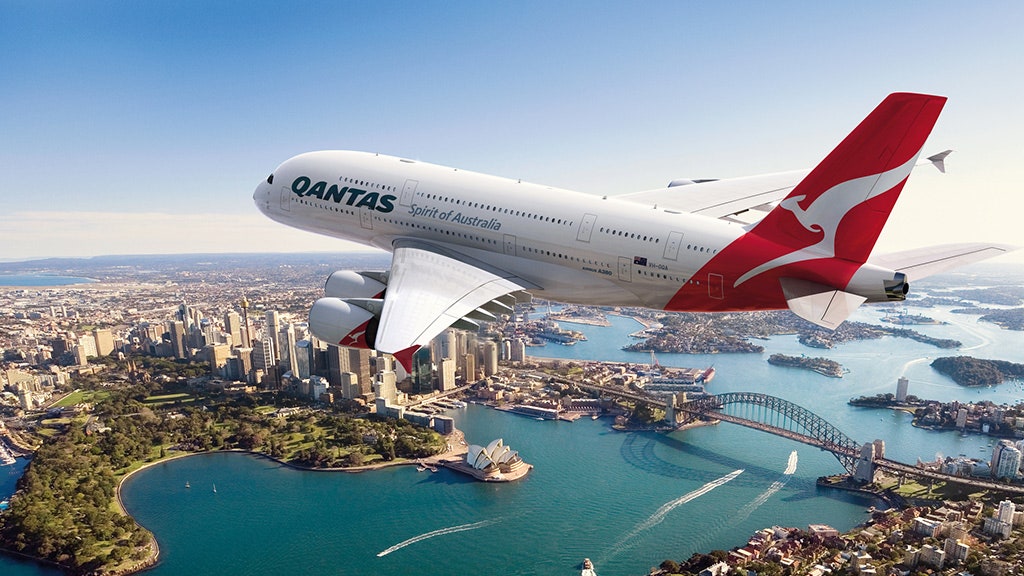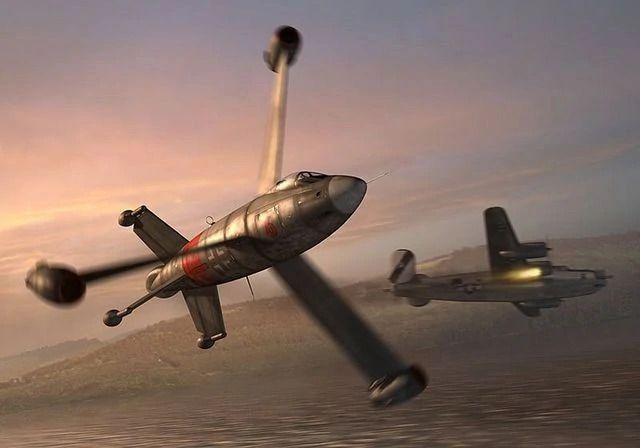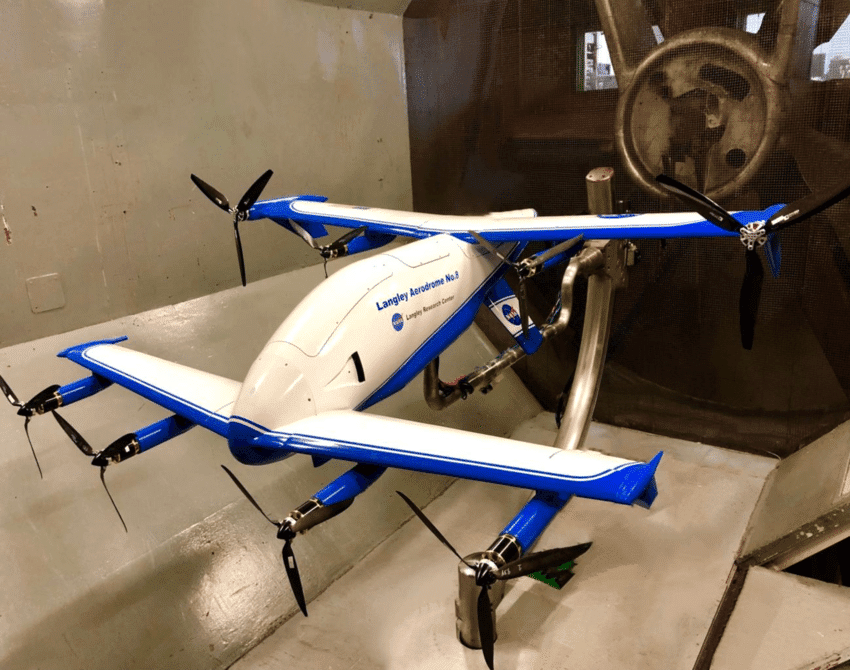Qantas Airways parked its 12 double-deckers (A380) in the Californian desert, saying they would not be needed for at least three years.
Qantas parked all 12 of its Airbus SE A380s in June 2020 as travel dried up at the start of the pandemic. It’s bringing back 10 of the jets, the world’s largest passenger plane, as international demand rebounds.
Returning just one grounded A380 superjumbo back into the air requires 4,500 hours of work, Qantas Airways Ltd. Chief Executive Officer Alan Joyce said, highlighting the challenge as aviation struggles to meet surging travel demand.
Qantas parked all 12 of its Airbus SE A380s in June 2020 as travel dried up at the start of the pandemic.
At a lunchtime speech in Sydney on Monday, Joyce explained the process of reactivating a plane that’s been sitting in the Californian desert for more than two years.
“Just to wake up an A38O is 4,500 hours, or two months, of manpower. That’s 10 engineers working for two months in the Mojave Desert -- for one plane. They replace all 22 wheels, and all 16 brakes, plus get rid of all of the oxygen cylinders and fire extinguishers. Everything on board the aircraft is replaced.”
“The aircraft is put up on jacks in the middle of the desert. Its gear is tested, and the aircraft’s engines are run in the desert to make sure that they’re all functioning. That’s just to get out of the desert to Los Angeles or to another maintenance facility. When the aircraft is flown out, most of it then goes through 100 days of maintenance on top of that.”
“We will have six of the aircraft back by Christmas, but we won’t get all 10 of them back until well into 2024. That’s how long this takes.”
One grounded A380 Superjumbo needs 4,500 hours of work to fly again.
The Airbus A380 is truly a giant. It has a wingspan of 261.8 feet (79.8 meters), a length of 239.5 feet (73 meters) and a maximum take-off weight of more than 1.2 million pounds (540,000 kg).
While it is the largest passenger airliner ever made, it is not the biggest airplane in the world -- this honor belong to the Ukrainian An-225 Cossack.
A plane this size can potentially carry hundreds more passengers than today's airliners. The A380's two passenger decks (with a cargo deck below) could be outfitted in a single-class configuration to take on up to 840 passengers.
With inputs from economictimes.
Read next
The Focke-Wulf Triebflügel, also known as Triebflügeljäger, was a German aircraft idea created in 1944, during the last stages of World War II, to defend against the escalating Allied bombing raids on central Germany.
A VTOL from the twentieth century?
In an effort to devastate German industry and bring the German war machine to its knees, the Allies developed massive bombing raids. Despite not being outclassed, the Luftwaffe was severely understaffed, making the need for new ways to safeguard the skies over Germany critical.
The Modelling News
It was created as a type of "tailsitter" interceptor aircraft with vertical takeoff and landing for the defence of important factories or locations without airfields or just with a small area for takeoff.
Design and specs
The design was especially unique. It had no wings, and a rotor/propeller arrangement that extended a third of the way down the craft's side generated all of the lift and propulsion.
Modellversium
The rotors would have operated like a helicopter when the plane was vertically positioned on its tail. They would act more like a huge propeller when flying horizontally.
The rotors would be tilted to provide lift when taking off, much like a helicopter. The pilot would tilt the plane into level flight once it achieved a suitable altitude. At the highest forward speed of the aircraft, the rotors kept spinning at 220 revolutions per minute as they flew level.
CREWOneWINGSPAN11.5 m (38 ft 0 in)POWERPLANT(s)3 × Pabst ramjets, 8.9 kN (2,000 lbf) thrust each3 × Walter liquid fuel rockets2 × standard German Walter 109-501 RATO units , 14.71 kN (3,306 lbf) thrust eachMAXIMUM SPEED 1,000 km/hSERVICE CEILING15,300 mRATE OF CLIMB50 m/s GUNS2 × 30 mm MK-103 each with 100 rounds + 2 × 20 mm MG-151 each with 250 roundsWikipedia
Four tailplanes made up the cruciform empennage at the back of the fuselage. These tailplanes included moveable ailerons that could have served as both rudders and elevators. The tailplane would have given the pilot a way to regulate flight in pitch, roll, and yaw in addition to preventing the fuselage from rotating in the same direction as the rotor due to friction from the rotor ring.
The aircraft had to reduce its speed and tilt its fuselage until it was vertical in order to land. The pilot's seat on this aircraft was fixed in the direction of forward flight, unlike certain other tailsitters. Rear view would likewise be obstructed by the rotating object.
Among VTOL craft from the 20th century and other German concept craft, this design was exceptional. The Rotary Rocket Roton spacecraft, however, had a free-spinning rotor with tip-driven rotors generating lift in certain early concept studies from the 1990s.
https://www.youtube.com/watch?v=bqqQ48KFXJE&t=13s
After the war, the U.S. obtained the aircraft's blueprints and briefly tested the design before abandoning it. Since then, no other aircraft designers have tried a concept like this, and it is unlikely that anything like it will ever be seen again.
The Focke-Wulf Triebflügel may very well be qualified for the title of the wackiest airplane ever created.
What do you think?
SOURCE(s)
COVER: Source
Read next
Vistara, the Tata-Singapore Airlines joint venture will start operating flights on Dhaka-Mumbai route from November 15. The airline will operate two weekly flights on this route.
Vistara's flight UK 183 will depart Mumbai Airport at 7:35am and arrive in Dhaka at 11:00am on Tuesdays and Thursdays. The return flight UK 184 from Dhaka will leave at 12:00pm local time and reach Mumbai at 2:45pm local time on the same days.
Vistara is currently operating daily flights on Dhaka-Delhi route with a brand new 188-seater A321neo aircraft with three class configuration – Business, Premium Economy and Economy.
Also read - Vistara to add new destinations
The airline recently became the second-largest domestic operator by market size.
The round-trip all-inclusive fares for Mumbai-Dhaka-Mumbai start at INR 18,299 and round-trip all-inclusive fares for Dhaka-Mumbai-Dhaka start at BDT 24,899.
Vistara currently has a fleet of 53 aircraft, including 41 Airbus A320, five Airbus A321neo, five Boeing 737-800NG and two Boeing 787-9 Dreamliner aircraft. The airline is on course to ramp up its fleet to strengthen its network globally and expects to take the number to 70 aircraft by 2023.
Even as a potential merger with Air India is being considered, Vistara is charting out its own plans to expand international operations. The airline plans to increase frequency on the Frankfurt and Paris route and add newer routes. Vistara flies to London daily and operates flights to Frankfurt and Paris three times and two times a week respectively.
Also read - Vistara – Air India merger talks with Tata Group confirmed by Singapore Airlines
Vistara had ordered six B787 planes in 2018, but has got delivery of only two B787 to date.
The joint venture between Tata group and Singapore Airlines has seen an 80 per cent load factor on its international routes with a rise in bookings for premium economy and business class seats.
The full-service airline currently operates more than 50 daily flights from Mumbai and five international flights. This number is expected to be scaled up when more aircraft join the fleet.
Also read - Vistara announces festive season sale
Read next
Saudi Arabia is in advanced negotiations to order almost 40 A350 jets from Airbus as part of a broader, multi-billion-dollar drive to launch a new airline and challenge heavyweight carriers in the Gulf, industry sources said.
A final decision on the proposed deal, worth around USD 12 billion at list prices, depends on political approval at the highest level, with Boeing also lobbying for a slice of the expansion despite a chill in U.S.-Saudi relations.
One source familiar with the negotiation for the new airline, provisionally named “RIA”, cautioned that it was “not over yet”.
Industry sources said Boeing remained confident of winning at least part of a total requirement for around 68-75 jets via its Boeing 787 Dreamliner, already in use at state-owned Saudia.
Also read - Saudi Arabia to launch a new airline RIA soon, eyeing several aircraft
Saudi Arabia In Talks For 40 Airbus A350s.
Reports have said that the new airline may also need smaller narrow-body jets. Reuters first reported in August that Saudi Arabia was discussing a significant order for wide-body jets. Bloomberg News reported on Sunday that any deal could involve up to 80 aircraft.
The Future Investment Initiative (FII) is a showcase for Crown Prince Mohammed bin Salman’s Vision 2030 plan to diversify from oil by fostering new industries that generate jobs and lure foreign capital.
Saudia has a mixed fleet of Boeing long-haul 787 and 777 jets and Airbus A320-family short- to medium-haul models.
The new airline will be based in the capital Riyadh, while state airline Saudia will be based out of the Red Sea city Jeddah under a transportation strategy that calls for the establishment of two hubs to rival UAE and Qatari carriers.
The potential deal is seen as part of the country’s effort to launch a new airline, RIA, to rival neighbouring countries such as Qatar and the UAE.
Analysts caution that even with a large investment warchest, it faces a tough challenge to counter the powerful Dubai and Doha aviation hubs of Emirates and Qatar Airways respectively.
“They have established networks and large established fleets and will be a strong competitive force for any new airline.Getting hold of enough aircraft will be an important issue, as well as coping with shortages of trained pilots.”James Halstead, managing partner at Aviation Strategy.
With inputs from reuters.
Read next
The NASA Langley Research Center in Hampton, Virginia, is studying how electric vertical takeoff and landing (eVTOL) aircraft operate and interact with an electric-propulsion system as several of these aircraft move toward certification.
The LA-8 is a part of NASA's Advanced Urban Air Mobility Test Beds project, which was started to establish a baseline for comprehending the aerodynamics of current and future aircraft in the advanced air mobility (AAM) sector, which includes the full range of electric aircraft from short-haul urban to regional flights.
The Langley Aerodrome No-8
At the NASA Langley Research Center, the Langley Aerodrome No. 8 (LA-8) is a vertical takeoff and landing (VTOL) aircraft with distributed electric propulsion that is utilized for both free flight and wind tunnel testing. The goal of the LA-8 project is to provide a low-cost, modular test platform for advanced air mobility technologies, such as electric urban and short-range flight.
NASA
New electric VTOL and short takeoff and landing (STOL) designs may quickly have their aerodynamic, acoustic, and flight dynamics analyses verified using the techniques utilized on the LA-8. The flight vehicle will also be utilized to develop test procedures for FAA flight vehicle airworthiness certification and to create reliable, fault-tolerant flight control algorithms.
This particular aircraft doubles as both a wind tunnel and flight dynamics model. he idea is to obtain useful data that can be used to perfect modeling toolssaid David North, Unmanned Aerial Systems Section Lead at NASA Langley
The tricycle landing gear on the LA-8 consists of an inverted V-shaped frame for the back landing gear and a vertical strut at the front of the aircraft. About 80% of the model is constructed using nylon and polycarbonate 3D printers, allowing engineers to quickly alter the wings, the fuselage, and add other model components like propellers and computer systems. The flexibility of the aircraft's primary parts enables swift configuration adjustments to take other designs into consideration.
eVTOL.news
Technical papers for conferences sponsored by the American Institute of Aeronautics and Astronautics (AIAA) as well as summaries posted on the NASA Technical Reports Server have all been published so far on the LA-8 program (NTRS). The early development work on the drone is highlighted in "Design and Fabrication of the Langley Aerodrome No. 8 Distributed Electric Propulsion VTOL Testbed."
The emerging class of eVTOL aircraft has considerable, even transformative market potential. That said, there are a number of issues that need to be addressed before the full market potential of eVTOL aircraft can be realizedsaid Ray Jaworowski, senior aerospace analyst, Forecast International
Analysts agree that this innovative, environmentally friendly method of aviation travel has potential despite the difficulties. According to Fortune Business Insights, the market for eVTOL aircraft will be worth $5.4 billion by 2021. The market is anticipated to increase to $23.21B by 2028.
The vast majority of data from eVTOL developers is not publicly available. Some companies don’t have the resources to generate the data necessary to build accurate models. Others, like Joby Aviation, Archer and Beta Technologies have the resources to hire analysts and modelers, but are not sharing that dataNorth said
As a result, NASA Langley is accumulating information that is accessible to everyone, including the makers of eVTOL aircraft, authorities, and the general flying public. The potential uses for eVTOL are vast and diverse, despite issues with profitability, regulation, and operations.
SOURCE(s): NASA | eVTOL.news
COVER: ResearchGate
Read next
Indian aviation regulator DGCA on Friday removed the 50% cap restrictions on SpiceJet flights. From winter schedule, which kicks in from October 30th - 25th March 2023, SpiceJet airline can operate with full capacity.
This comes after DGCA extended restrictions on SpiceJet to operate only 50 per cent of departures till October 29, 2022.
The airline’s services were capped at half its approved schedule after a string of air safety incidents in the summer, when the Directorate General of Civil Aviation (DGCA) also put the carrier under enhanced surveillance comprising audits and safety checks.
DGCA lifts 50% cap on SpiceJet flights.
"The airline is complying with all the directions emanating from audits/checks. Hence, the restrictions on them will not be extended further and they are allowed to operate flights without any restrictions.”Arun Kumar, the Director General of DGCA.
Over 21,941 flights on domestic routes will be operated every week in the winter schedule. The number of weekly flights is expected to be 1.55% lower than 22,287 flights that operated in the previous winter schedule.
According to a PTI report, in the upcoming Winter Schedule 2022, 21,941 departures per week have been approved from 105 airports. Out of these 105 airports Deoghar, Shimla and Rourkela are the new airports proposed by the scheduled airlines.
Scheduled airlines will operate 21,941 flights on domestic routes every week in the winter schedule starting from October 30.
Out of the total 21,941 departures, the maximum will be by IndiGo at 10,085 followed by SpiceJet at 3,193.
Air India will have 1,990 departures, Vistara (1,941), Air Asia (1,462), Go Air (1,390), Alliance Air (1,034), Akasa Air (479), Fly Big (214) and Star Air (153).





Comment